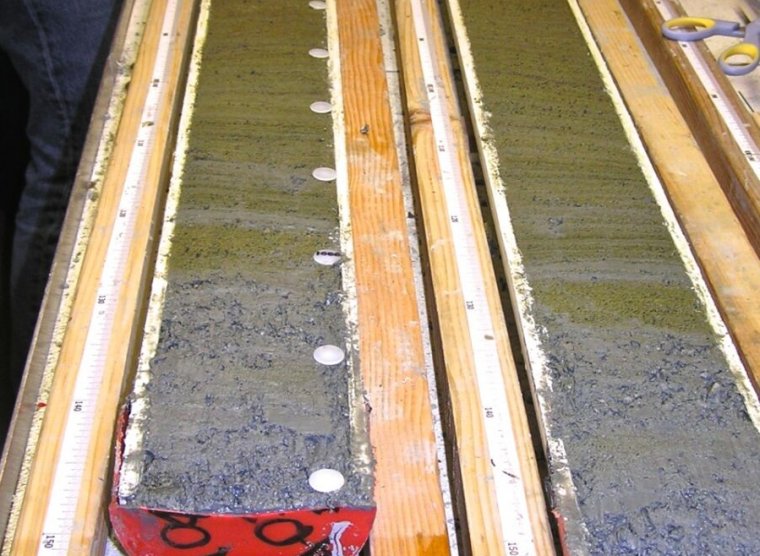
Enlarge / Isotopes in sediment cores like these can provide indications of past temperatures. (credit: E Alaska Scientific Party)
In a paper recently published in Science, Professor Nele Meckler of the University of Bergen and colleagues argue that the climate between around 35 and 60 million years ago may have been considerably warmer than we thought. Their finding suggests that a given level of CO2 might produce more warming than prior work indicated, and it hints that the ocean circulated differently during that warm, ice-free climate.
Their conclusions come from new measurements of carbon and oxygen isotopes found in the shells of tiny creatures, called benthic foraminifera or “forams,” that lived on the seafloor at the time. Earlier work with similar samples had estimated temperatures using oxygen isotopes—a technique that could be confused by changes in how much water was locked away in ice at the poles and, to a lesser extent, variations in ocean salinity. The new study used a technique that registers temperatures more reliably and produced much warmer numbers.
A newer, clearer thermometer
Benthic foram oxygen isotopes have been a mainstay of ancient global climate studies, with the latest most detailed record extending back 60 million years. Deep ocean temperatures reflect ocean surface temperatures over timescales longer than about 1,000 years because the global “conveyor belt” of ocean circulation turns over on that timescale. Oxygen isotopes in that water reflect ocean surface temperature, and by extension global climate, because water with the heavier isotope oxygen-18 is a bit harder to evaporate than water with oxygen-16; when the sea is warmer and there’s more evaporation, oxygen-18 builds up in the oceans.
No comments:
Post a Comment